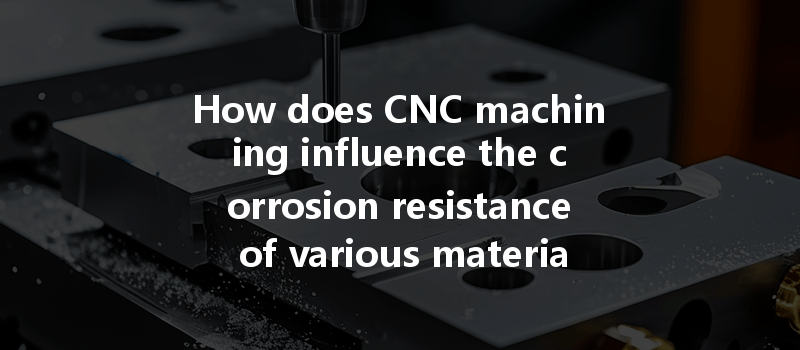: The Unseen Challenge of Corrosion
Did you know that corrosion is responsible for around 20% of the total cost of industrial manufacturing in the United States alone? It’s a staggering statistic that highlights the importance of proactive measures to protect materials used in various applications. In today’s highly technical manufacturing environments, understanding how processes like CNC (Computer Numerical Control) machining can impact the corrosion resistance of materials is crucial. It is not just about producing parts with precision; it also means ensuring that these parts can withstand the test of time, especially in corrosive environments.
In this comprehensive blog post, we will delve deep into the interplay between CNC machining and corrosion resistance. We will explore the factors affecting material performance, provide solutions to mitigate corrosion risks, and highlight best practices in machining processes to enhance durability. Whether you’re a manufacturing professional, a materials scientist, or simply someone interested in the intricacies of CNC machining, this guide will offer valuable insights.
—
Understanding CNC Machining and Its Relevance
What is CNC Machining?
CNC machining is a method of manufacturing that uses computer-controlled machines to create precise parts and components from various materials, including metals, plastics, and composites. CNC machines can perform various operations, such as milling, turning, drilling, and grinding, leading to high levels of accuracy and repeatability.
Why is Corrosion Resistance Important?
Corrosion is a natural phenomenon that deteriorates materials when they react with their environment. For many industries, such as aerospace, automotive, and marine, corrosion resistance is crucial for ensuring safety, reliability, and longevity. Corrosive environments can rapidly degrade unprotected materials, leading to failures that can be costly both financially and in terms of safety.
—
The Relationship Between CNC Machining and Corrosion Resistance
Factors Influencing Corrosion Resistance
How CNC Machining Can Affect Corrosion Resistance
CNC machining can have both positive and negative implications for corrosion resistance:
—
Addressing the Challenge: Best Practices for Enhancing Corrosion Resistance

Selecting the appropriate materials for CNC machining is the first step in reducing the risk of corrosion. High-performance alloys, such as titanium, nickel-based alloys, and stainless steels, offer excellent corrosion resistance. It’s critical to evaluate the environment in which the part will operate to select the most suitable material.
A proper surface finish can drastically improve corrosion resistance. Here are several techniques to achieve optimal finishing:
The machining process involves various parameters like feed rate, cutting speed, and tool geometry. By controlling these parameters, manufacturers can minimize the heat generated during the process and reduce potential microstructural damage.
After machining, parts should undergo necessary treatments to maximize corrosion resistance:
A comprehensive inspection process should be implemented to identify any signs of defects or irregularities that could compromise corrosion resistance. This could involve:
—
Case Studies and Practical Applications
Case Study 1: Aerospace Components
In the aerospace industry, components made from aluminum alloys must withstand extreme conditions, including high humidity and temperature fluctuations. An aerospace manufacturer utilized high-precision CNC machining combined with anodizing treatment to enhance corrosion resistance while maintaining dimensional accuracy. As a result, they observed a significant reduction in corrosion-related failures.
Case Study 2: Marine Applications
A marine equipment manufacturer faced challenges due to corrosion in offshore operations. By switching to CNC machining processes that utilized Duplex stainless steel and applying a combination of shot peening and passivation, they improved the longevity and reliability of their components, reducing maintenance costs substantially.
—
: The Importance of Addressing Corrosion Resistance in CNC Machining
Understanding how CNC machining affects the corrosion resistance of materials is essential for manufacturers aiming to produce durable and reliable components. Factors such as material selection, surface finish, machining parameters, and post-processing treatments all play crucial roles in mitigating corrosion risks.
By implementing best practices, such as optimized machining techniques and effective post-treatment protocols, businesses can significantly enhance the longevity of their products while maintaining structural integrity. The evolution of CNC machining in conjunction with stringent quality control measures paves the way for advanced manufacturing processes that adhere to the highest standards of safety and reliability.
This blog serves as a crucial reminder for all stakeholders in manufacturing to prioritize corrosion resistance when designing and producing machined components. Emphasizing these aspects not only translates into lower operating costs and increased productivity but also reinforces a commitment to quality that is vital in today’s competitive market.
As we continue to innovate and improve in the field of CNC machining, the intersection of technology and material science will remain an important focal point for enhancing the capabilities of manufacturers worldwide.






